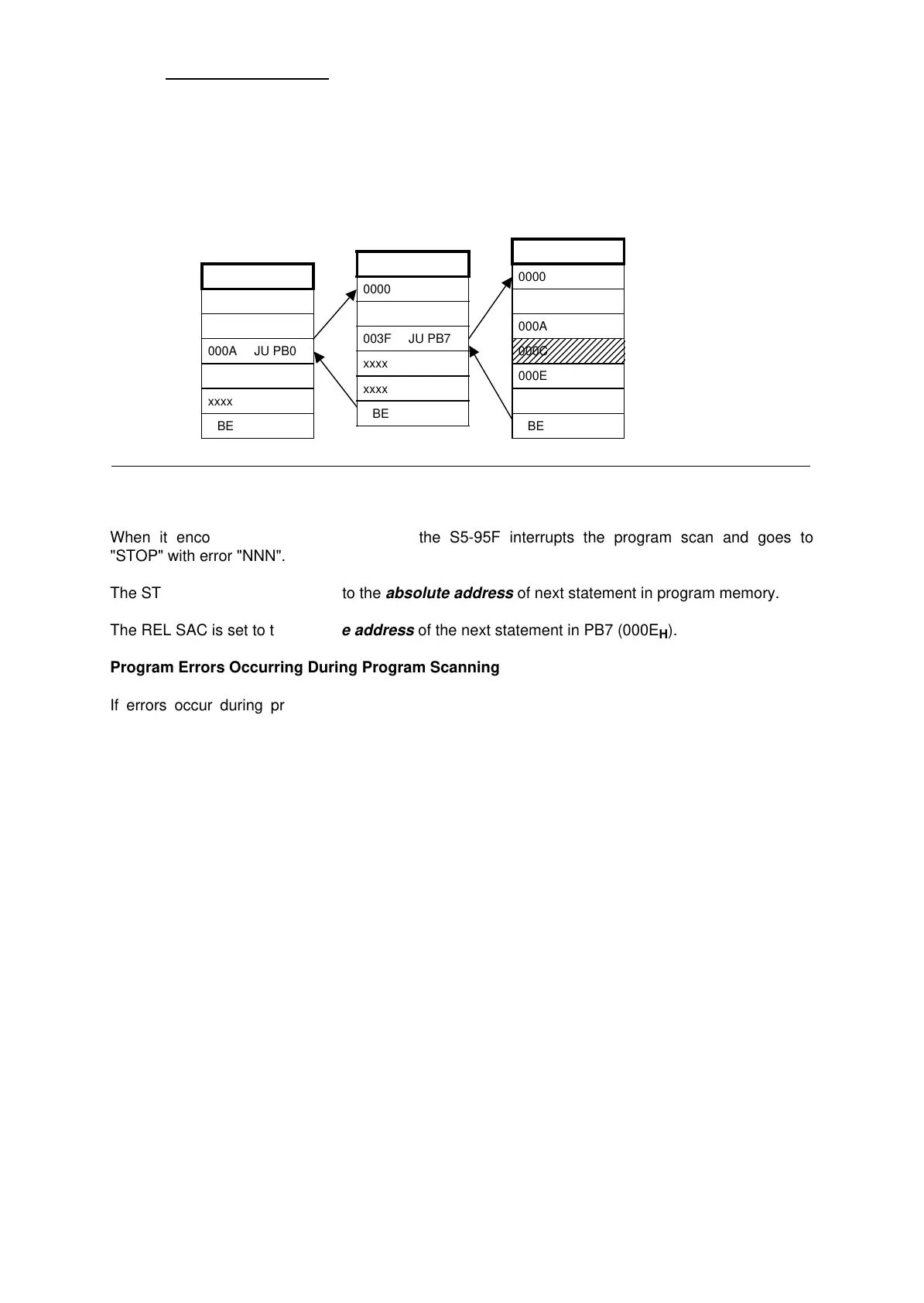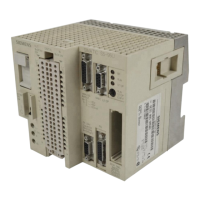S5-95F Testing the User Program and Storing It on the Memory Submodule
Example: You have written a user program consisting of OB1, PB0 and PB7, but you
programmed an illegal statement in PB7.
Figure 14-4. Structured Program with Illegal Statement
Illegal
statement
OB1
PB0
PB7
0000
xxxx
a
a
a
a
a
a
a
a
a
a
a
a
a
a
a
a
a
a
a
a
a
a
a
a
a
a
a
a
a
a
a
a
a
a
a
a
000A JU PB0
xxxx
BE
0000
xxxx
a
a
a
a
a
a
a
a
a
a
a
a
a
a
a
a
a
a
a
a
a
a
a
a
a
a
a
a
a
a
a
a
a
a
a
a
003F JU PB7
xxxx
BE
0000
a
a
a
a
a
a
a
a
a
a
a
a
a
a
a
a
a
a
a
a
a
a
a
a
a
a
a
a
a
a
a
a
a
a
a
a
a
a
000C
000E
BE
a
a
a
a
a
a
a
a
a
a
a
a
a
a
a
a
a
a
a
a
a
a
a
a
a
a
a
a
a
a
a
a
a
a
a
a
a
a
a
a
a
a
a
a
a
a
a
a
a
a
a
a
a
a
a
a
a
a
a
a
a
a
a
a
a
a
a
a
a
a
a
a
000A
When it encounters an illegal statement, the S5-95F interrupts the program scan and goes to
"STOP" with error "NNN".
The STEP address counter is set to the
absolute address
of next statement in program memory.
The REL SAC is set to the
relative address
of the next statement in PB7 (000E
H
).
Program Errors Occurring During Program Scanning
If errors occur during program scanning without the programmer's STATUS function having been
used, the STEP address counter is set to the
start address of the errored block
.
The
relative address counter
(REL-SAC) is set to "0000
H
". A more precise error location is not
possible.
For runtime errors such as "SUF" and "TRAF", however, you can ascertain the exact error address
in a somewhat roundabout way.
To do so, proceed as follows:
Set the S5-95F to "STOP".
On the programmer, invoke the "STATUS" function for the errored block.
Switch the S5-95F from "STOP" to "RUN".
When the S5-95F has once again gone to "STOP", display the ISTACK again on the
programmer screen.
The STEP address counter now shows the absolute memory address, and the
relative STEP
address counter
(REL-SAC) shows the relative address within the block preceding the address at
which the S5-95F went to "STOP".
EWA 4NEB 812 6210-02
14-11

